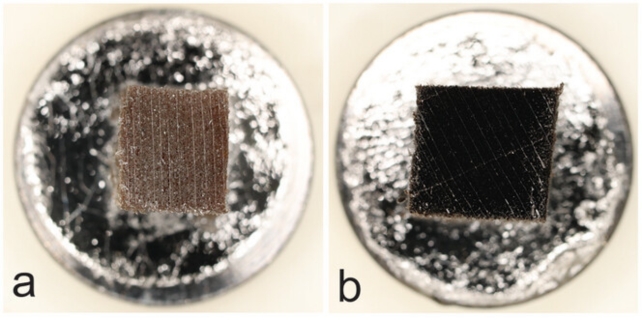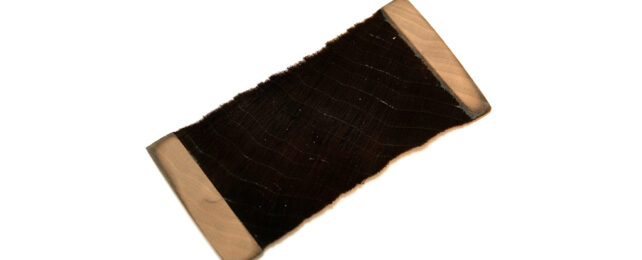There's black, and then there's super-black. A new super-black wood-based material has been created that absorbs more than 99 percent of the light that hits it. What's more, the material was discovered almost by accident.
Researchers were working on water-repelling technologies for wood, using high-energy plasma gas – and noticed that the application of the gas turned the ends of wood cells completely black.
Further examination revealed the incredible light absorption properties of the new super-black material.
The team, led by PhD student Kenny Cheng from the University of British Columbia (UBC) in Canada, has named their new material Nxylon. Nyx is the Greek goddess of the night, and xylon is the Greek word for wood. Nxylon could find uses in everything from space telescopes to luxury jewelry items.
"Nxylon's composition combines the benefits of natural materials with unique structural features, making it lightweight, stiff and easy to cut into intricate shapes," says senior author Philip Evans, a materials scientist at UBC.
The material has a velvety appearance, its inventors report. The plasma treatment actually changes the tiny structures on the surface of the wood, introducing indentations that help to capture light and minimize any reflections.
Indeed, when a gold alloy was applied to the material, it remained black. This shows that the structure of the wood has changed – this isn't just an extra coating, but a reconfiguration of the fundamentals of the material.

Super-black materials are valuable in industries like astronomy, solar energy, and optics, where they help devices function more accurately or efficiently by reducing unwanted light reflection. For example, super-black materials can reduce glare and improve clarity on telescopes.
These materials are also popular in art and design because super black creates striking visual effects by providing a sharp contrast to any bright colors nearby. This is similar to how some birds and peacock spiders use super-black with bright colors in their mating displays.
The team behind the discovery thinks Nxylon could be used in wearables and fashion accessories too.
"We anticipate that our findings will lead to interest in plasma etching as a way of creating super-black woods, possibly leading to commercial applications of the technology," write the researchers in their published paper.
There are numerous advantages to the new material. It uses wood (specifically basswood), which is a renewable material. It doesn't require any complicated pre-treatments either, reducing costs and making the production of the material more viable.
The researchers are confident that Nxylon can replace rare, expensive black woods such as ebony and rosewood, and replace the black gemstone onyx. This is all still some way off, but the team is now looking for commercial partnerships via a new startup.

While we've seen materials that are even blacker than this, and able to absorb even more light, this new addition shows a lot of promise in terms of how plausible it might be to actually produce it at scale – and the same technique could be used on other woods too.
"Nxylon can be made from sustainable and renewable materials widely found in North America and Europe, leading to new applications for wood," says Evans.
The research has been published in Advanced Sustainable Systems.
